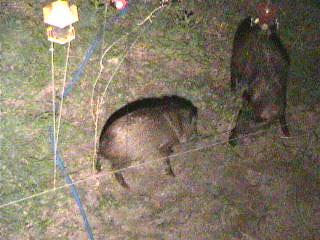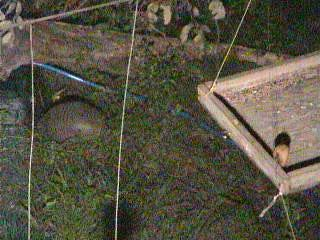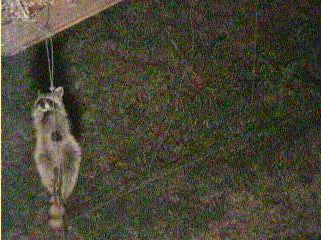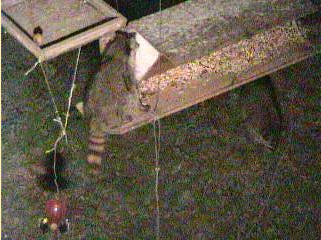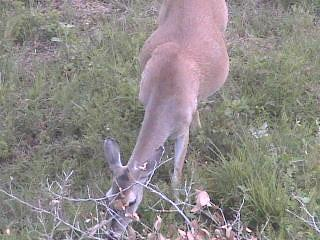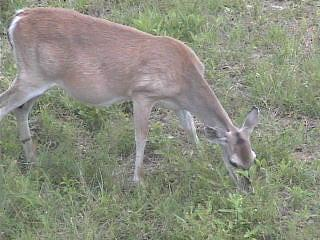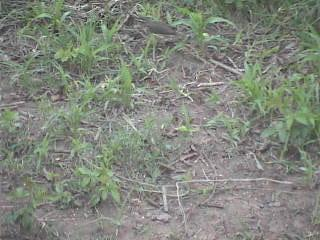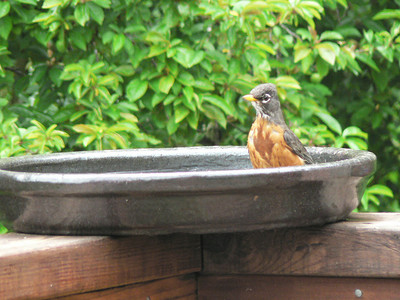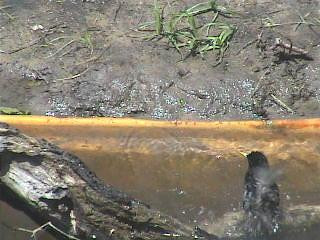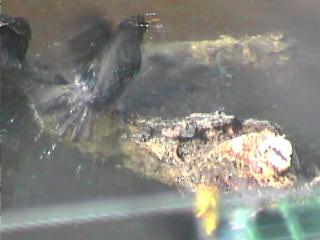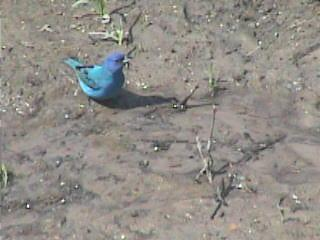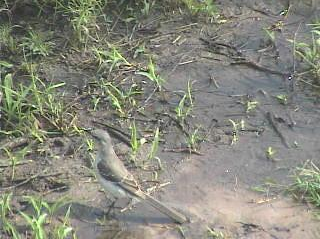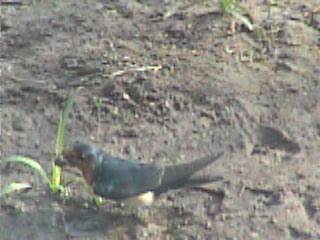Here are a number of shots from the last few days that have me scratching my head:
rafa got this shot yeterday, though I didn’t notice it until it was pointed out in the comments today:
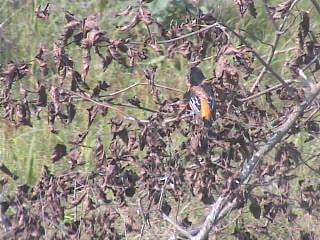
I’m not sure what I’m looking at there; it seems to be a male oriole, or maybe a male Black-headed Grosbeak, but it’s hard for me to say what’s going on at the top of the bird; is that the back of its head? Its shoulders, with its head ducked down out of sight?
Compare it with these two photos taken today by robin54 and kryptonkay, respectively:
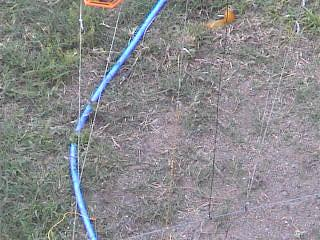
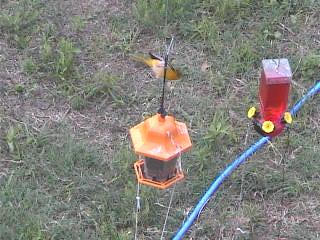
I’m getting an oriole feeling from these images, but beyond that I’m not prepared to commit myself.
Here’s another shot of what looks very much like a woodpecker, perhaps the Golden-fronted Woodpecker that was possibly photographed on the same tree yesterday. This shot was taken by avatar99 at 9:15 a.m. today:
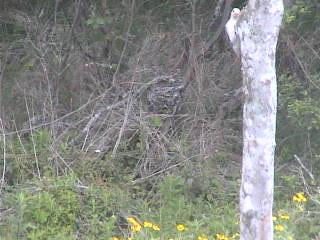
Here’s a shot that txbird got today at 11:57 a.m.; the bird is hard to see until you notice it perched in the sticks on the left side of the image:
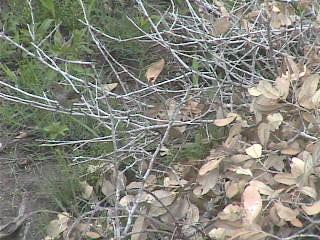
It’s hard for me to say what it is, but compare it to this next one. This is a bird that I really wanted to get a closer shot of, but by the time we got done wrestling over the camera it flew off:
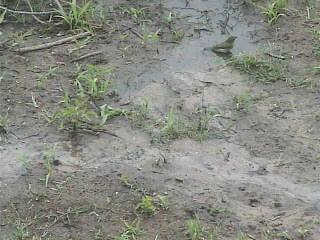
birderbf mentioned in chat that he or she got a shot of this bird, too, and ID’d it as a female Painted Bunting. Looking at the shot I got, I could totally see that; I’m looking forward to seeing any other shots that show up after they’re done being “embargoed” for the hour that has to elapse before players other than the person who took the shot can see them.
Update: birderbf and thedevilbird both got a shot almost, but not quite, identical to the one I got, with their two shots being actually identical to each other. Here’s the shot they got:
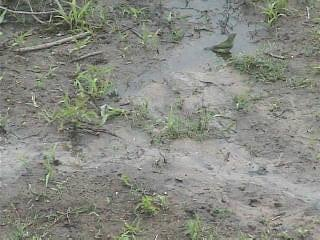
So again, I don’t think I’m completely comfortable with calling this a female Painted Bunting based on these shots alone, but it certainly looks as much like one as anything else I can find, and I’m willing to defer to someone who has actual experience with seeing the bird in real life (which I don’t).
Update: And now the shot I got, and the shot that thedevilbird got (which again, was pretty much identical to the one that birderbf got) have both been ID’d as Painted Bunting.
